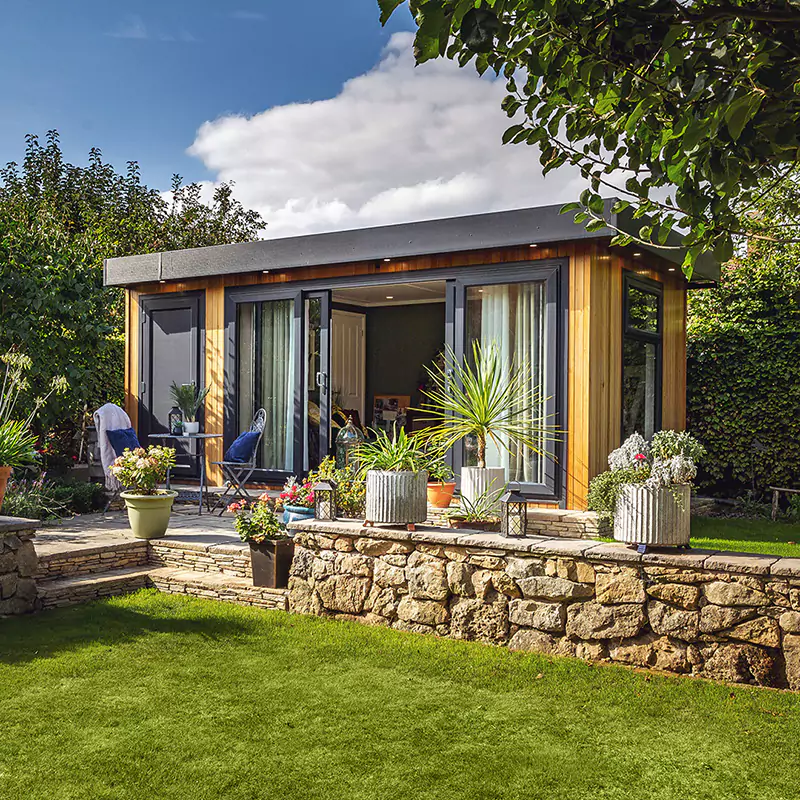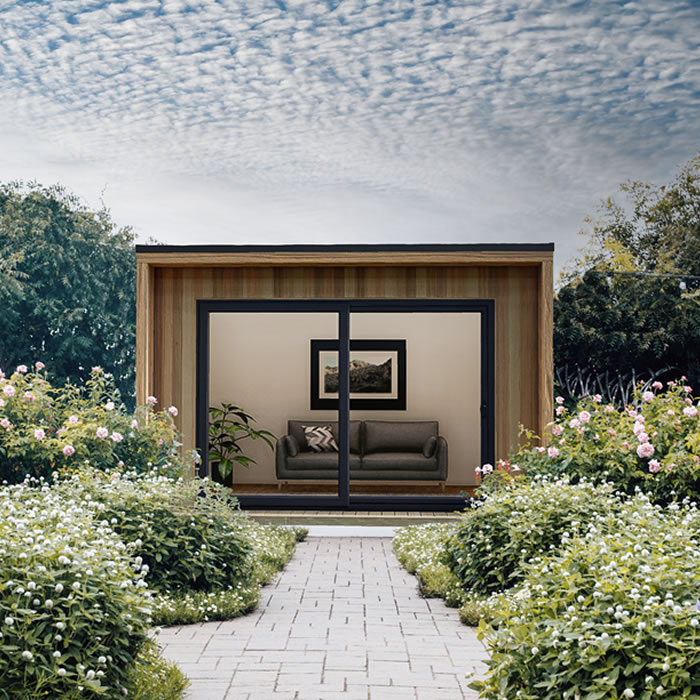Handy Info For Planning Permission For Garden Summer Houses
Handy Info For Planning Permission For Garden Summer Houses
Blog Article
What Planning Permits Are Needed For Gardens, Rooms, Etc. With Regard To Changes Of Use?
When determining whether planning permission is needed for conservatories, garden rooms or outhouses as well as garden offices or extensions, "change of use", also known as "change of purpose", plays an important function. Planning permission is required for changes in use.
If you are planning to convert a non-residential structure (like garages or an agricultural building) into a residential space or garden office, planning permission is typically required. This is due to a change to the use of the building will be necessary.
Garden Rooms as Living Space:
Using a garden room as a separate living accommodation (e.g. an apartment, guest house or a rental unit) is considered to be a change in use. In order to ensure that the construction is in compliance with all requirements for residential properties the planning permit is required.
Business Use
Planning permission might be required when you plan to use the garden, conservatory, extension or extension. to conduct business (e.g. as an office for an office at home with frequent visitors as well as employees). This is due to potential impact on your neighborhood, such as noise, traffic, and parking.
Use for Education or Community:
Changes in the use of a garden structure to be an educational or community space (such as a classroom or meeting hall) is also a requirement for permission for planning. The local authority will assess the appropriateness of the site and the impact it has on the area around it.
Impact on Local infrastructure
Any alteration in use that will have a significant impact on the local infrastructure (e.g. roads, drainage systems, public services, etc.) is likely to require planning approval. As part of the planning process the local authority must assess the impact of these changes.
Dual Use
Planning permission may be needed for mixed-use property (such as a property that is part commercial and residential). This can help to clearly define different uses on the property.
An increase in footfall, traffic, and revenue:
The local planning authority has to be able to sanction the plan should it cause an increased footfall or increase in traffic.
Regulations for Building Regulations Conformity:
Even though it is not necessarily a question of planning approval, every change in use needs to conform to the construction regulations. This ensures security, health standards, and energy efficiency. It is of particular importance for conversions into habitable spaces.
Environmental Impact:
Changes in use that may negatively impact the environment, like changing agricultural land into residential uses, require planning permission. A planning application may include an environmental analysis.
The Community Effect and the Amenity Effect
It is crucial to take into account the impact that the change has on the local amenities within the area as well as the overall appearance of the area. Planning permission will be needed to transform an area into a café for example to ensure that it is aligned it with the local plan and to preserve the local amenities.
The following areas are not permitted to be used
In areas designated like National Parks, conservation areas or Areas of Outstanding Natural Beauty(AONB) the property is subject to stricter restrictions to maintain the look and feel of the place. Planning permission is required in these cases.
Local Planning Policies:
Local planning authorities may have policies that differ widely regarding the use of land. Consult these policies in order to identify what kind of changes require permission and which criteria must be fulfilled.
In short Planning permission is usually needed for any significant modification to the use of a garden space, conservatory or outhouse, garden office or extension. This is to ensure that the proposed use is appropriate for the location, complies with both national and local plans, and is able to address any potential negative impacts to the environment and community. Consulting with your local authority for planning at the beginning of the planning process is vital to establish the precise requirements and obtain the necessary approvals. Check out the best outhouse kitchen for site advice including composite garden rooms, small garden office, herts garden rooms, outhouse uk, do i need planning permission for a garden room with toilet, what size garden room without planning permission, what size garden room without planning permission, small garden office, composite garden rooms, myouthouse and more.
What Kind Of Planning Permission Is Needed For Gardens, Rooms Or Other Areas. For Listed Structures?
If you're planning to construct conservatories, garden rooms, outhouses or gardens offices on the grounds of a listed property There are particular considerations that must be taken into consideration. These are the most important considerations when preparing such projects.
Any alteration, extension or construction that falls within the boundaries of a listed building typically requires listed building consent as well as planning permission. These are because any changes could affect the character and importance of the listed property.
The impact on the character of historical characters:
Any new or extended construction that may affect the appearance or character of the historical building or the listed building or its surroundings, needs planning permission. Garden rooms and outbuildings are included.
Materials and Design
The new structure and its materials should be in line with the architectural and historical importance of the building that is listed. It may be necessary to design bespoke plans and the usage of traditional materials which requires planning permission.
Distance from the Listed Building
New structures constructed near historic sites are scrutinized for their impact on setting and appearance. Planning permission is needed to ensure that they don't detract from the building's character.
Size and Scale
The proposed extension, garden room, or conservatory should be proportional and harmonious with the building that is listed. The bigger structures will require more precise analysis and planning approval.
The Property Location:
The position of the new structure (whether to the front, side or rear of the listed building) can affect the need to obtain planning permission. Locations that are visible or impacting crucial views of the building typically require a more careful examination.
Internal Changes
Even if you're taking down the structure that was previously in use, any internal modifications that are made to the building should have planning approval and the building's listed consent.
Conservation Areas that Overlap
Additional restrictions may apply Additional restrictions may apply if the listed structure falls within a conservation zone. Planning permission is needed to ensure that both conservation area and listed building regulations are adhered to.
Use of the Building
Planning permission is usually needed in relation to the intended use that the garden room, or other outbuilding will have. The uses that require a substantial shift, like residential accommodation or commercial usage, are scrutinized more closely.
Structural Impact
Any building that may impact the structural integrity of the listed building must be approved by permission for planning and a listed building permit, ensuring that both the existing and new structures are safely and properly integrated.
Local Authority Guideline:
Local authorities usually have guidelines on listed buildings that define the types of construction and changes are allowed. Planning permission can ensure that these guidelines are followed.
Professional Assessments
Conservation professionals are often called upon to carry out detailed evaluations of proposals for projects on listed properties. These assessments assess the suitability and the support for proposed modifications.
It is crucial to remember that planning approval or listed building permission will almost always be required to permit the construction of garden rooms, conservatories and outhouses as well garden offices, extensions or garden offices incorporated into listed structures. Consult with your local heritage and planner very early on in the process of planning to ensure that you are in compliance with all applicable regulations and to preserve historical and architectural integrity. See the best garden rooms modern for blog examples including costco garden room, costco garden office, garden room permitted development, Tring garden rooms, costco outbuildings, outhouses for garden, outhouse buildings, garden room conservatory, costco garden room, insulated garden rooms and more.
What Planning Permit Do You Need For Garden Rooms And So On.?
In deciding whether to obtain planning permission for garden rooms, conservatories and outhouses and also extensions or gardens It is crucial to consider the design of the structure. Here are some important aspects to take into consideration:
Planning permission is not required for structures that are within the permitted development rights of your property. There are certain aesthetic and design criteria that need to be met.
Size and Scale
The structure must be proportional in size to the property and adjacent buildings. The size of the new structure must be proportionate to the existing property as well as surrounding buildings.
Height and Massing
The mass and height of the structure to be constructed should be consistent with the dimensions of the existing property and surrounding structures. Planning permission is typically required for buildings that are excessively tall or unbalanced with the surrounding area.
Materials and Finishes
The materials and finishes chosen should be in harmony with the surroundings. If the materials chosen do not match the local style and design the planning approval may be required.
Design Harmony
The style of the new structure should harmonize with the architecture of the current property as well as the surrounding buildings. Planning permission is necessary in the event that the proposed design is not in harmony with the local style and character.
Roof Design
The roof's design must be in harmony with the architecture of the building and its surroundings. It could be necessary to get permission to plan when the design of the roof does not match with the local style or design.
Fenestration (Windows and Doors):
The design and location of windows and entrances should be in harmony with the existing structure and the surrounding area. The proposed fenestration could require a planning permit when it doesn't match the local character.
Facade Treatment:
Facades must be designed in a manner that is compatible with the surrounding structures and existing properties. It could be necessary to seek planning permission for the proposed facade design that is not compatible with the style and character of the location.
Landscaping and Surroundings:
The landscaping must complement the existing properties and buildings. Planning permission might need to be obtained if landscaping isn't in keeping with the local style.
Visual Impact:
The visual impact to the surrounding area of the proposed building must be limited to a minimal level. If the proposed structure would create a negative visual impact on the surrounding area, planning permission might be required.
Heritage and Conservation Areas
If the property situated in an area designated as a heritage site or preserving its natural beauty, the design and aesthetic standards could be more strict. Planning permission could be required for any building that is not in compliance with these criteria.
Architectural and Planning Guidelines:
Local planning authorities will often issue design and aesthetic guidelines. Planning permission may be required if the proposed building isn't in accordance with these guidelines.
Summary The planning permission needed for garden rooms and conservatories and outhouses, office buildings or extensions, are usually contingent on the design of the structure, its appearance, and the size of the structure proposed. It is important to check early on with the local authorities to determine if planning permission is necessary and to ensure that the design fits with the local guidelines on character. See the recommended outside electrical cable wiring regulations uk for blog advice including myouthouse, garden rooms in St Albans, garden rooms, costco garden rooms, garden room conservatory, garden room heater, garden outhouses, garden rooms near me, composite garden rooms, how to get power to a garden room and more.